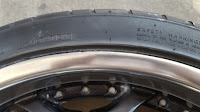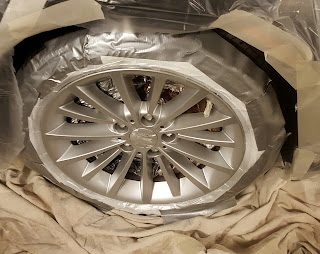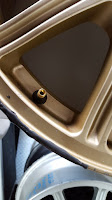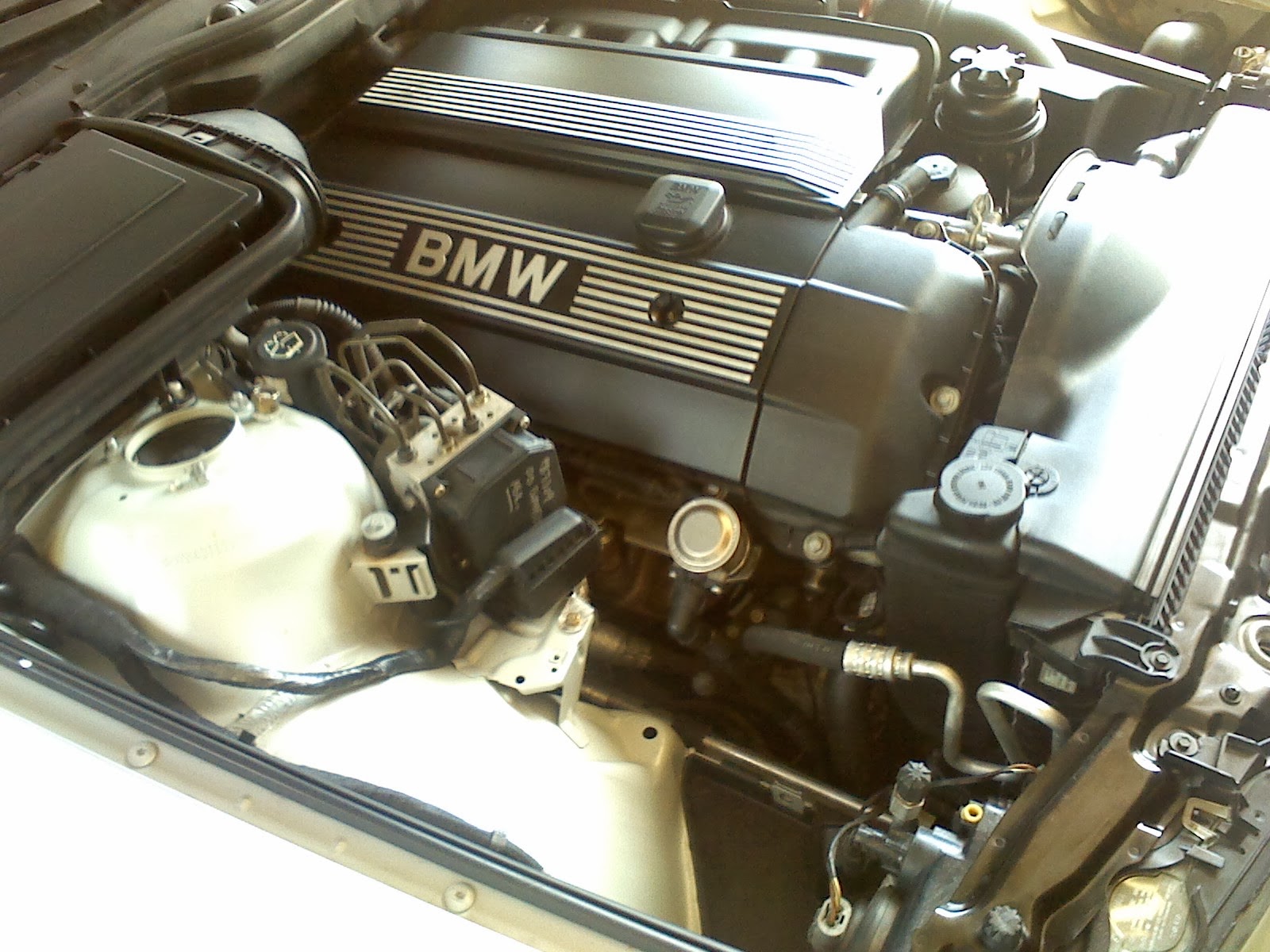Every car guy
was a little boy once that saw an automobile that changed his life.
It’s the automotive
work of art that made that little boy into a car guy in the first place. It’s the car that made that little boy
whisper “someday” to himself initiating a promise that few little boys ever get
to keep. It could be a Ferrari or a
Jaguar, or a Mustang or a Monster Truck.
It doesn’t matter so much what the car is, it only matters that it
creates a dream inside that young man; a motivation, a destiny to fulfill.
A long time ago I
was a little boy that whispered someday to myself after seeing a Ferrari 250
Testa Rossa at the Forest Grove Concours show.
I was never able to achieve ownership of that car since only 26 were
ever made and they cost a bit more than 30 million dollars the last time I
checked. I’m not alone. Very few young men who dream of owning a
particular special automobile ever manage to achieve it. The boy who dreamed of driving a red Ferrari
ends up driving a silver mini-van. The
young man who pined for a Jaguar ends up riding the bus to work. Life sometimes gets in the way of dreams.
On rare occasion
you meet a guy that doesn’t let anything get in the way of a dream. Bob Spencer is one such person. As a young man the car that set off his dream
was a 1965 Lincoln Continental. This
past summer we had the wonderful opportunity to work on Bob’s dream car and get
to know him. His 1967 (don’t worry it
looks just like a 65) “slab side” Lincoln Continental has the distinction of
being the longest car we have ever worked on and one of the most beautiful.
The
younger set reading this will recognize the “Lincoln” moniker as that Ford
division that uses actor Matthew McConaughey as a back seat (barely
understandable) spokes person. To Ford’s
credit, the Lincoln moniker is being attached to some decent vehicles these
days, but in its heyday, Lincoln, and especially the Continental was the
vehicle dujour for American aristocracy.
Lincoln
wasn’t always just another brand name in the Ford arsenal. Lincoln was an independent automotive company
founded in 1917 by Henry Leland. Leland
was an engineer who divided his infant automobile companies’ time between building
aircraft engines for the government and the first Lincoln car, the Model
L. He named his car company after
President Abraham Lincoln who was the first president he had ever cast a vote
for (back in 1864). By 1922 Leland and
his fledgling auto company were already in financial difficulty and Leland was
forced to sell Lincoln Motor Company to Ford.
Ford
continued in the spirit of the original founder and associated the Lincoln name
with a higher-end, more luxurious portfolio of vehicles. Perhaps its crowning achievement, though,
would develop when they created the “Continental”, Americas answer to the
finest touring cars of Europe. They
brought top designers and coach builders and launched the name in 1941. By 1956 “Continental” was its own division
within Lincoln (which was a division of Ford).
Design characteristics of the Lincoln Continentals became so popular
that they found their way onto other cars.
For example, the Continental’s initiated a stylish method for dealing
with the spare tire. It was incorporated
into the rear bumper and covered with chrome and body colored special fit
panels. This “Continental Kit” became an
iconic component of the 1956 Thunderbird as well as other cars. The Continental kit evolved over time but
remained a mainstay of the Continental style for a long time.
In
1961, Lincoln introduced a new design Continental which would usher in one of
the longest design periods of any car of modern era. Called the “slab-side” Continental, it
represented the pinnacle of prestige and design achievement for the Lincoln
moniker. The slab side Continental’s, was
used as transport for the Presidents of the United States (before Limmo 1 ever
came about) and was in countless movies and TV shows. They incorporated what were originally called
“suicide doors” in their design (i.e. the front door handle was positioned as
normal at the back of the door but the rear door handles were positioned on the
front of the door and the door opened from the front). This led to a cleaner overall design as the
handles were all positioned in one spot leaving the side view of the car as
uncluttered as possible.
 |
| Slab Side Publicity Photo |
The slab-side
Continental was beautiful and my goodness it was long. Bob wanted a 1965 but ended up with a 1967. His
pristine example is a gorgeous aqua blue with a nearly identical colored
interior. We prepped this car for the
same car show where I fell in love with an Italian race that I would never own;
the Forest Grove Concours D’Elegance. I’ve never been an old, big American car guy
but I will admit that the 67 Lincoln impressed me. It’s easy to see how Bob could have fallen
for this thing.
The
car is as old as me, but it had some pretty slick technology for its day. Not surprising as this was very expensive car
right out of the showroom costing some $8,000 new according to Bob. That’s about $63,000 in today’s money. Bob’s 67 made us feel like we went 50 years
back in time. It was so close to a
showroom condition vehicle it was like time travelling. Every single thing on his car worked--the
power windows, the lighters, absolutely everything. All very impressive but what actually really
impressed me was the hood.
The hood on the
67 Lincoln Continental is a masterpiece of engineering. From a design perspective it has what I
describe as a “floating hood”, that is the hood rests inside the fenders and
front grille. It does not curve over the
grille or impede into the region of the fenders. The only other manufacturers doing this at
the time were Rolls Royce and Bentley.
From an engineering perspective it was more impressive still. Utilizing a simple cantilever design it was
perfectly balanced and maintained an even amount of resistance on your hand as
you closed it. It didn’t fall and slam
shut and you didn’t have to force it. It
required a minimal amount of pressure from one hand to click closed. I’ve worked on new supercars that can’t do
that.
Everything
about this car was well done. The paint
was as good as anything I’ve seen and the attention to detail in the interior
was startling. I was beginning to really
understand what my father loved about these cars (he always wanted one). At the same time we were prepping the
Lincoln for the event, we were also working on a Tesla Model X. It got me thinking. The Lincoln had some interesting technology
for its day but it’s more nostalgic than impressive by today’s standards. But the Lincoln has class. The Tesla is a masterpiece of technology
today but its’ tech will seem silly in 50 more years. The Lincoln will still have class in
2067. Will the Tesla?
Bob purchased
his dream car in 2007 from the original owner.
The car was one of only 28 painted in the medium, to light blue metallic
color. That’s 28 on planet earth just to
clarify. Over the years Bob worked on
it, both preserving and perfecting bit by bit.
He’s had it in car shows and done pretty well. In fact, the reason he contacted us was to
prep it for the Forest Grove Concours D’Elegance event that was held in July
this year. Since Lincoln was founded in
1917, this was the 100 Anniversary of the make, a big deal, and the Forest
Grove Event was dedicated to Lincoln cars.
Although Bob had done well with the car in other events he felt he might
struggle at the Forest Grove show since so many of the best Lincolns from all
over the west coast would be there. How
did he do?
Oh…not too
bad. His car received a ranking of
99.75…nearly a perfect score. He took
second in class being bested only by a perfect 100 point car that had just gone
through a complete body off restoration costing over $100,000. I’d say he did pretty well.
Bob has restored
some other cars (a Ford Galaxy) and owns some very reliable modern Hondas but I
asked him what was next. What if
anything might he want now? I liked his
answer. “Bentley,” he said. “Bentley Arnage”. I liked that answer. Bob has good taste in cars. I hope he gets a proper green one and then
brings it over to me so I can play with it.














 ufe
ufe